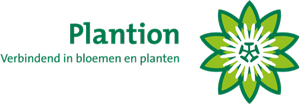Digital version of plant passport number now available
The plant passport number has recently been copied into a digital version. For clock sales and direct sales, it can be attached digitally to the Electronic Delivery Form (EDF). This new version is a response to a commonly expressed wish of buyers. The digital plant passport is transferred for direct trade via the Electronic Clock Transaction (ECT) and DESADV (ECT for direct trade) to the buyer and on into the chain. This simplifies the checking and guarantee of the plant passports and improves the traceability of products. Along with supplying the plant passport numbers digitally, a paper plant passport must accompany each of the smallest sales units (for example, per tray/box /pot).
Legally required
The plant passport is legally required for certain plants and plant products marketed within the EU. This includes transport and handling within the Netherlands and shipping to other member states. Seeds and end products like fruits, cut flowers, and cut foliage are exempt. The aim of the plant passport is to be able to trace the original producer faster in cases of phytosanitary problems to prevent the spread of plant diseases. Starting in 2016 in connection with the outbreak of Xylella fastidiosa in the south of Italy and France, which causes e.g. Pierce’s disease in trees, measures were implemented. For example, additional host plants have been included in the list of plants for which a plant passport is mandatory, and more attention is being paid to the use of plant passports. Their correct use has thus become even more urgent. As Royal FloraHolland we want to remind you again of the mutual importance and the legal obligation to provide both a physical and a digital passport to keep the trade borders open for trade and to do our utmost to keep out Xylella and other diseases.
Recent inspections by NAK Tuinbouw
In April 2016, the NAK Tuinbouw (Netherlands Inspection Service for Horticulture) conducted passport inspections at Royal FloraHolland. These inspections revealed that the required plant passports were not included in all cases and that not all suppliers were registered. This means there is room for improvement. The NAK Tuinbouw will contact the suppliers who did not meet the legal requirements, and any lots with an incorrect passport or lacking one upon re-inspection will be withdrawn from the market.
For more information, please consult the websites of the NVWA (www.nvwa.nl) and the VBN (www.vbn.nl). For additional details about Xylella, read the newsletter from NAK Tuinbouw (newsletter). For instructions on how the digital plant passport should be included in the EDF, please consult the relevant software suppliers.



